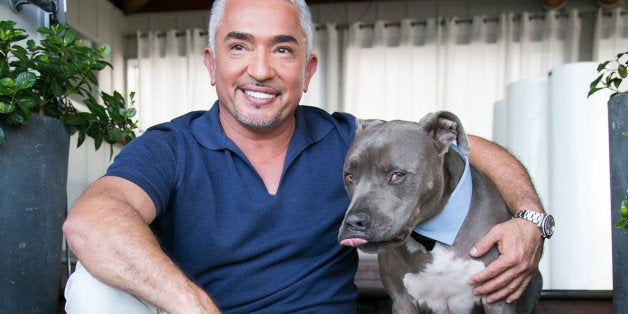
1. First, ask yourself what you want your dog to learn. Is your dog like one of the extreme cases on my TV shows? Then learning "sit," "stay," "come," and "heel" is not necessarily the first lesson your dog needs. Some dog trainers don't do rehabilitation, some don't do obedience work, and some do both. Choose the right tool for the job you need done.
2. Think about your own philosophy and ethics. For example, some people are opposed to choke chains. I am not opposed to them and find them helpful in some cases, when used correctly. But I will not use a choke chain or any other tool an owner objects to, because if the owner feels badly about the tool, I guarantee you that the dog will have a bad experience with the tool. And there could be other reasons why I might not be the right trainer for you. You have a world of options when it comes to dog trainers. Make sure that the trainer you choose agrees with and supports your own values, because you are the one who is going to live with your dog and work with him every day.
3. Check out a trainer's certification. There are many gifted dog professionals out there who aren't certified -- I used to be one of them -- and the truth is that there are no hard-and-fast rules that necessarily mean a certified trainer is an expert. But having certification ensures that the person you hire has had to pass some minimum requirements, put in some hands-on hours with dogs, and do some studying. Certification also makes a trainer accountable to some basic standards and guidelines, which you can research.
4. Get referrals. This may sound obvious, but even if you find a trainer in a phone book, ask if you can talk to a couple of his or her previous clients. They can give you an idea of the trainer's methods, "bedside manner," reliability, and willingness to follow through.
5. Make sure the trainer includes you as part of the training process. There's nothing wrong with a trainer who asks you to drop off your dog in order to work with him. I do that myself from time to time, because often an owner is the cause of the dog's bad habits and he needs to be away from his owner in order to learn new ones. But I make it clear to my clients that I don't "fix" broken dogs. I work closely with the owners on identifying their own issues and behaviors so that they are able to change as much as their dog changes. If you've watched my show, you already know that more often than not it's the owner who needs the most "training."
Excerpted from "Cesar's Rules: Your Way to Train a Well-Behaved Dog." Copyright @ 2010 by Cesar Millan.
Which of my books is your favorite and why? Share your opinion with me in the comments.